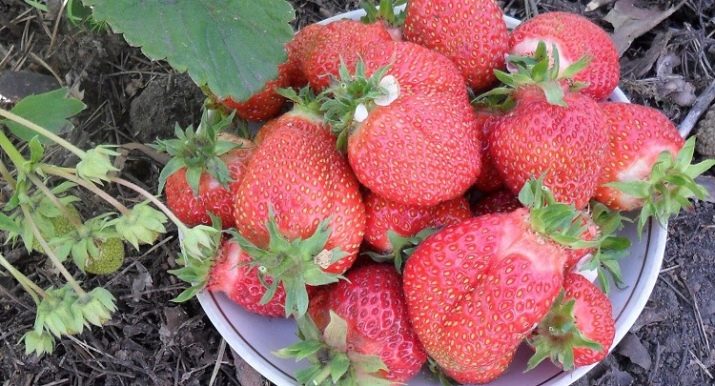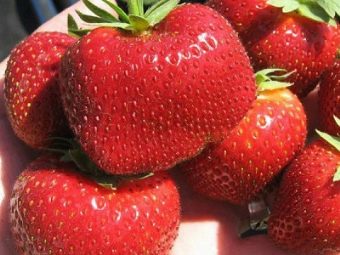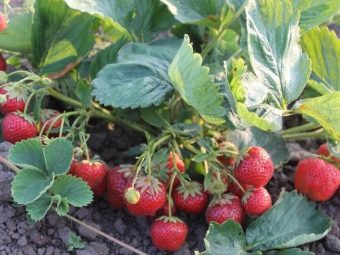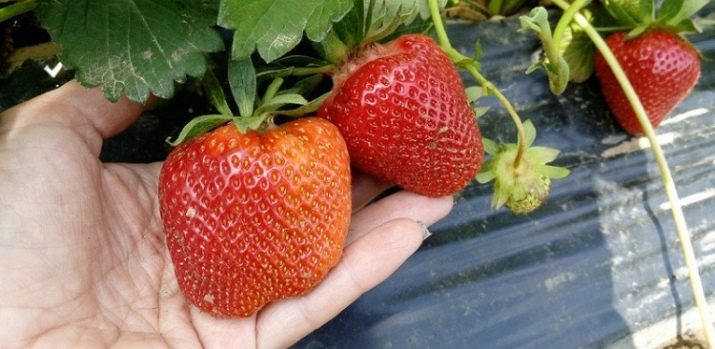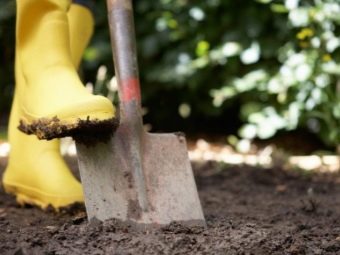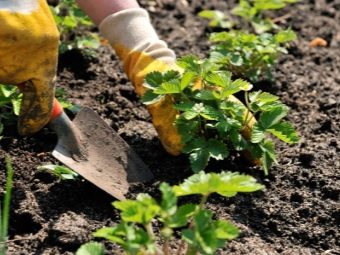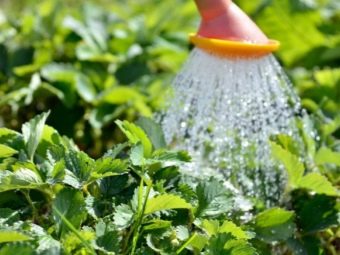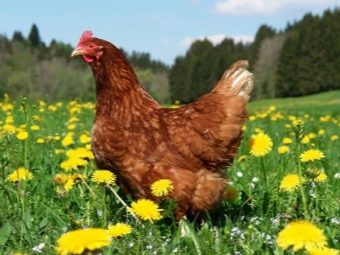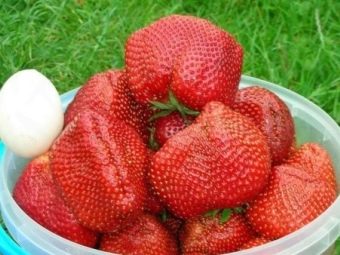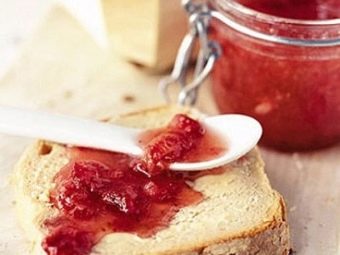Characteristics and cultivation of the Tsunaki strawberry variety
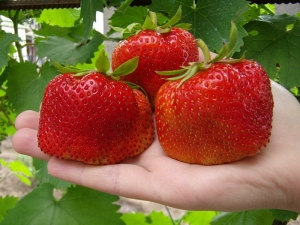
The main suppliers of various varieties of strawberries to our country are: Holland, Italy and Spain.Sometimes among these varieties could be found a fake, which could not take root in the territory of Russia. Unusual Japanese variety "Tsunaki" immediately managed to catch the fancy of domestic gardeners for its large fruits and very high yields, it has worked well.
Variety description
Sometimes there are varieties of garden strawberries are not the best quality, which is manifested in low yields. In the worst case, the plant cannot take root in the Russian climate, it freezes and disappears altogether. Strawberry varieties bred in Japan have a completely different character. One way or another, this country is located not far from Russia, which is why the climatic conditions of both countries are similar. On the world market of berry crops, the Japanese Tsunaki has been recognized as the owner of the largest fruits and, last but not least, has incredible taste qualities. Usually large berries are not very sweet, more watery. Japanese garden strawberries can be called dessert.
Our domestic gardeners did not often grow this species, because it appeared in our country not so long ago. Some have suggested that Tsunaki was not bred, as were his Japanese counterparts, Keys Nellis, Kipcha, and Chamora Turusi.
Strangely enough, it is impossible to learn more about the place of origin and the roots of Tsunaki. It's a secret. Nevertheless, this crop continues to delight summer people and farmers with their huge sweet berries. Culture safely used for domestic and industrial purposes.
World selection confirms the fact that the Japanese strawberry "Tsunaki" - a perfect example of high yield of strawberries, the presence of large fruits.
One appearance of the bushes is worth something. Massiveness and intensive growth allow them to reach one and a half meters in height, the bush in diameter is 70 cm. The bushes planted in areas bloom quickly and after that giant fruits appear. The thickness of pedicels and whiskers also differs from those of other varieties — it can reach 1.5 cm.
The plant grows thick foliage. The leaves are also large. This feature allows you to use the same leaves for a protective cover for the winter and from sun exposure on summer days. The variety withstands low temperatures and short dry periods. All this is due to a well-developed root system. According to gardeners, the successful cultivation of Tsunaki is observed on the territory of the middle zone, in the Urals and in the Far Eastern regions of our country.
The ripening period is in July. An interesting peculiarity is observed - in spite of the fact that the fruit did not have time to color in the desired red hue, and the flesh is completely light, it will definitely taste sweet and juicy, wateriness in this case is absent.
Japanese plant is very appreciated for its yield. From one bush can collect up to two kilograms of ripe fruit. Although this garden strawberry is a short day variety, which means fertility once a year, it can also be grown in greenhouses. Subject to all agrotechnical rules in greenhouse conditions, the yield will increase significantly - 3 kg per bush! It should be remembered that only in the second year after planting the plant begins to bear fruit. Unlike other berry varieties, the development and growth of “Tsunaki” takes place slowly, since it is not quick-fruited. In the first season you should not expect big fees.
You do not have to worry about the place where strawberries were planted for the first time. At one place it quietly develops over 6 years. After such a period, of course, it will be right to rejuvenate the site. A young plant initially produces a lot of antennae. Their rooting takes place gradually. They are a good model for the process of breeding berries. It is recommended to immediately prepare such material, because the older the plant, the less whiskers it gives.
It is worth noting the average resistance to a large number of plant diseases. Gray rot can overtake the berry, provided the planting density and the absence of the mulching method in the growing process.
Features of growing
The Japanese variety is very demanding on the composition of the selected soil. She must have high fertility. Do not select areas where tomatoes and potatoes were previously grown. For large and tasty fruits should pay attention to some points:
- Before planting the site must be properly aligned. Hollows and pits should be absent altogether. In such deepenings in the rainy season water will accumulate. It is necessary to loosen the earth, feed it with useful substances and clear weeds. Choose a soil with a neutral acid balance.
- The illumination of the plantation should be good.
- Seedlings need to take a healthy and high-quality. Choose material with roots up to five centimeters.
- There should be a couple of green and developed leaflets.
- Follow the standard landing pattern - 40x70, 80: 30 (cm).
- Be sure to add some organic matter to the prepared wells before planting - it can be humus, peat and high-quality compost.
It does no harm if you water the grooves well and wait until the main percentage of the water is absorbed. Planting in liquid soil is also welcome. Do not forget to straighten the roots of seedlings, then sprinkle them with nutritious soil.
Do not place the plant too deep. The upper kidney should be located above the ground. After you plant seedlings, produce abundant watering and mulching.
Care instructions
To achieve successful results in the cultivation of strawberries "Tsunaki", It is necessary to strictly observe the following rules:
- Keep track of the looseness and purity of the soil on which the plant grows.
- Watering should be done in the evening. Cold water should be discarded - the temperature should reach 15-20 degrees. Excessive watering will not be beneficial, so watch the ground moisture level.
- A couple of times a month, along with watering should feed strawberries.
- Fertilizing strawberries during the growing season takes more than five times.
- It is best to conduct fertilizer culture with mullein and bird droppings.
- In the third year of cultivation, preferably in the autumn, to add phosphorus-based mineral compounds to the soil, thanks to them, productivity will remain normal.
- After fructification has ended, enrich a garden berry with a nutritious complex.
- With the onset of cold weather, it is imperative to cover and mulch the beds. In the last period of development from the old bushes need to get rid of the first snow.
Gardeners reviews
Reviews of the Japanese "Tsunaki" quite controversial. Gardeners mark the formation of powerful bushes and large-sized berries with excellent taste and aroma. The process of fruit ripening takes a long time. Berries ripen not together. Some do not undertake to grow this variety, because there is very little information about the characteristics of this fruit crop. Questionable is the similarity with domestic and foreign varieties of strawberries.
Anyway, a ripe and juicy harvest still pleases the people of our country. The plant has adapted to the Russian climate, and it did not affect the taste of strawberries. Its productivity has remained normal for many years. Bright and juicy fruits like gardeners. Especially all note the lack of wateriness, which is so much found in domestic varieties of berries.
In the next video you will find a review of the best varieties of strawberries, including the Tsunaki variety.

